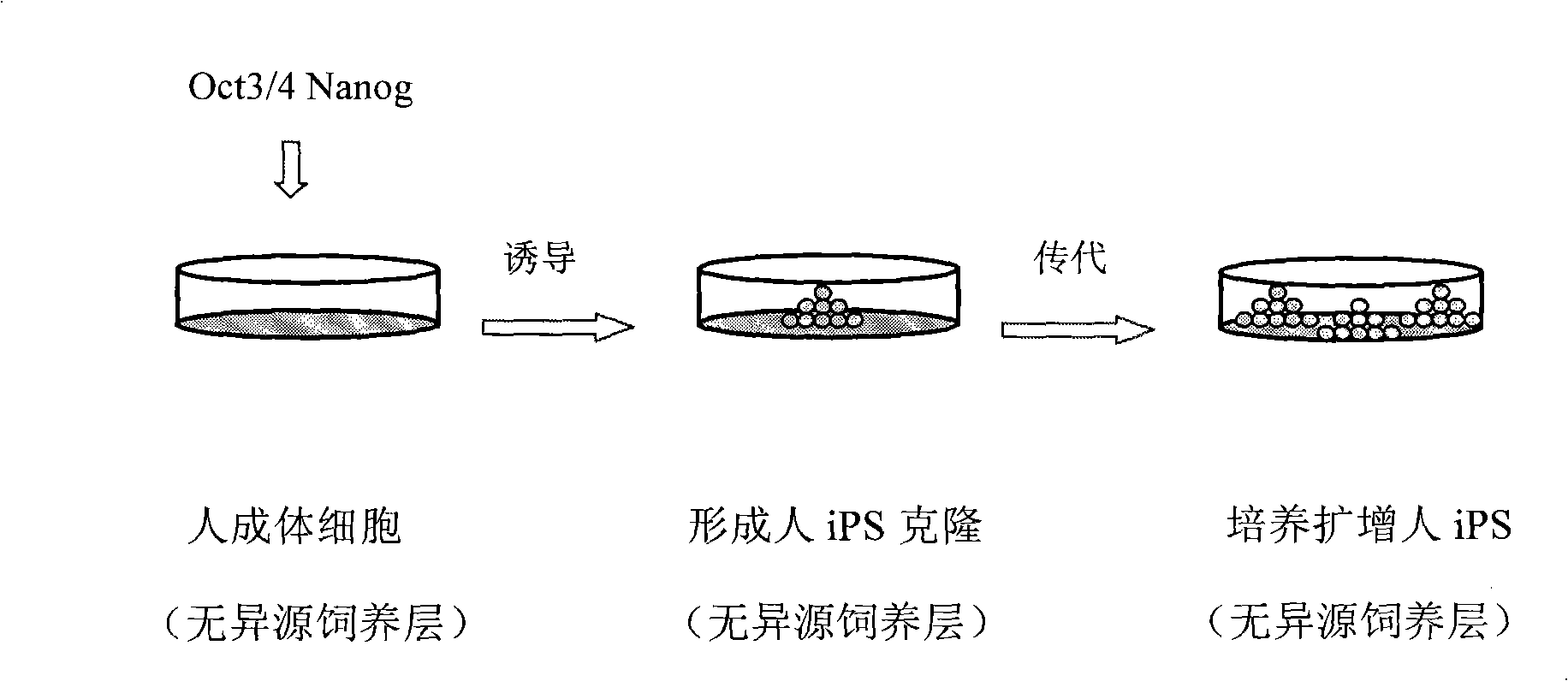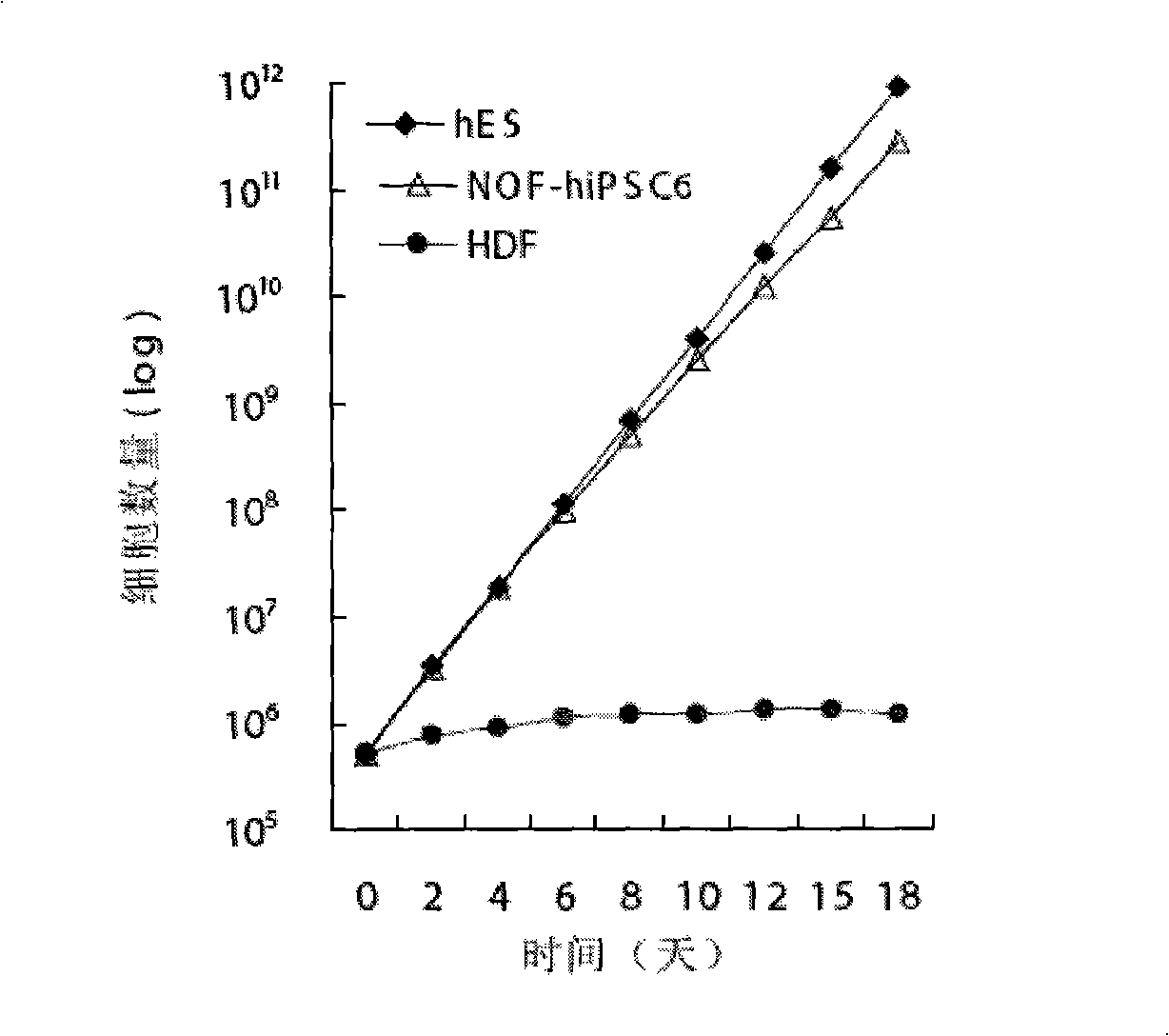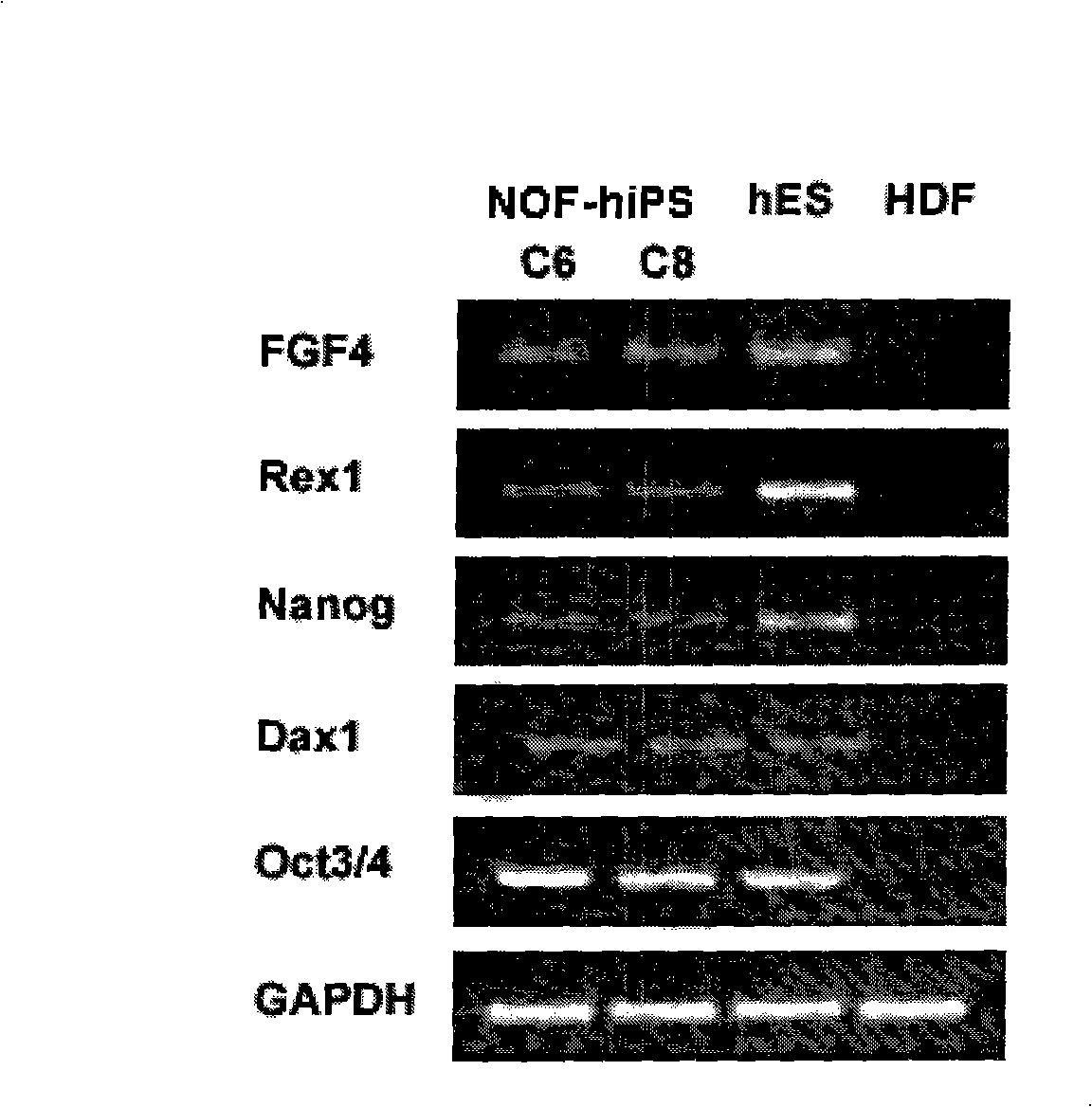Method for in vitro abduction and cultivation of multi-potentiality stem cell
A technology of pluripotent stem cells and feeder cells, applied in the field of biomedicine, can solve the problems of biosafety, infection, complex and changeable genome of pluripotent stem cells, etc., and achieve the effect of good biosafety
- Summary
- Abstract
- Description
- Claims
- Application Information
AI Technical Summary
Problems solved by technology
Method used
Image
Examples
Embodiment 1
[0028] According to the prior art, total RNA is extracted from human cell samples, reverse-transcribed into cDNA, and Oct3 / 4 and Nanog genes are amplified by PCR technology. The purified Oct3 / 4 was connected to the Nanog gene and the plasmid vector, and transformed into Escherichia coli for amplification.
[0029] Human skin fibroblasts were isolated and cultured. Under the condition of feeder-free cells, the purified plasmids containing 10 μg Oct3 / 4 and 10 μg Nanog transcription factor genes were transfected into human with transfection reagent lipofectamine2000 (Invitrogen Company). Adult cells were cultured in a cell induction medium, which was based on DMEM and added human basic fibroblast growth factor (fibroblast growth factor-2, bFGF) with a final concentration of 10 μg / L, Activin A (Activin A) with a final concentration of 10 μg / L, transforming growth factor β (transforming growth factor β, TGFβ) with a final concentration of 10 μg / L, epidermal growth factor (epidermal...
Embodiment 2
[0036] Human adult cells were isolated and cultured. Under the condition of no heterogeneous feeder layer cells (no feeder layer or using autologous cells consistent with the source of adult cells as feeder layer cells), the commercially available, containing 20 μg Oct3 / 4 and 20 μg Nanog A transcription factor protein was transferred into human adult cells and cultured in induction medium. The induction culture medium was based on DMEM, added with a final concentration of 40 μg / L human basic fibroblast growth factor (fibroblast growth factor-2, bFGF), 40 μg / L Activin A (Activin A), 35 μg / L L transforming growth factor β (transforming growth factor β, TGFβ), 35 μg / L epidermal growth factor (epidermal growth factor, EGF) and other cytokines and DNA methyltransferase inhibitors such as 20nmol / L trichostatin A , TSA) (the above are all final concentrations).
[0037] After the cells are cultured in the induction medium for a period of time, they are replaced with embryonic stem c...
Embodiment 3
[0042] Human (or monkey) adult cells are isolated and cultured, and Oct3 / 4 and Nanog transcription factor genes or proteins are transfected into human (or monkey) adult cells. Induce pluripotent stem cells under feeder-free conditions (or use autologous cells consistent with the source of human adult cells as feeder cells). The cell induction culture medium is based on DMEM, and the final concentration is 6 μg / L alkaline Fibroblast growth factor (fibroblast growth factor-2, bFGF), 6 μg / L activin A (ActivinA), 6 μg / L transforming growth factor β (transforming growth factor β, TGFβ), 6 μg / L epidermal growth factor (epidermal growth factor , EGF) and other cytokines and DNA methyltransferase inhibitors such as: 0.5mmol / L valproic acid (valproic acid, VPA) or 10nmol / L trichostatin (trichostatin A, TSA), the above are the final concentration.
[0043] On day 3-5 after transfection, the cells were replaced with embryonic stem cell culture medium to continue culturing. The medium w...
PUM
 Login to View More
Login to View More Abstract
Description
Claims
Application Information
 Login to View More
Login to View More - R&D
- Intellectual Property
- Life Sciences
- Materials
- Tech Scout
- Unparalleled Data Quality
- Higher Quality Content
- 60% Fewer Hallucinations
Browse by: Latest US Patents, China's latest patents, Technical Efficacy Thesaurus, Application Domain, Technology Topic, Popular Technical Reports.
© 2025 PatSnap. All rights reserved.Legal|Privacy policy|Modern Slavery Act Transparency Statement|Sitemap|About US| Contact US: help@patsnap.com



